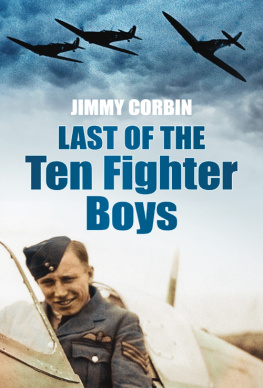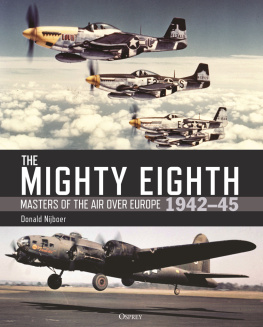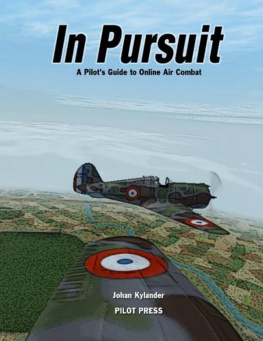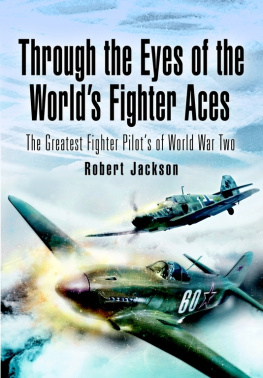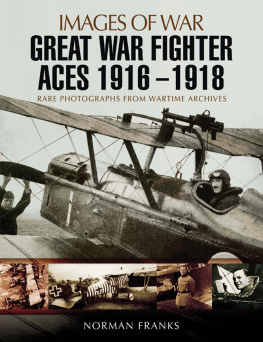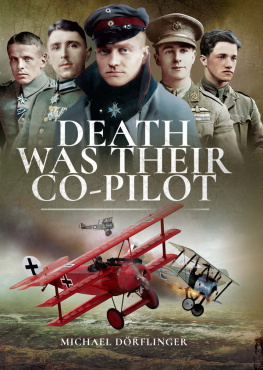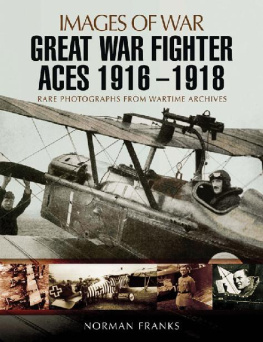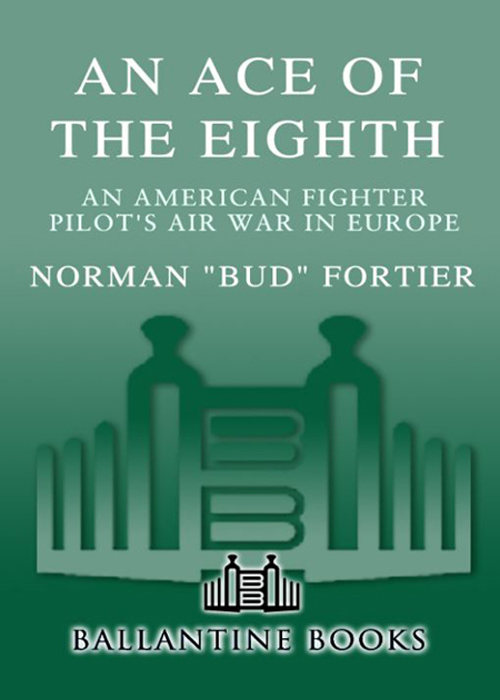
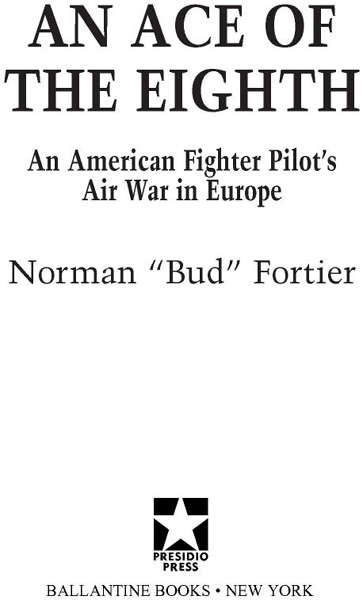
Table of Contents
To Jane
My loving wife and best friend
Acknowledgments
Memory isnt the first thing to go, Im told, but it certainly doesnt improve with ageat least not in my case. I had to rely on several sourcesand peopleto fill in large gaps. Among the many whose help was invaluable:
Burt Sims, whose contribution to this book was written more than fifty years ago, when he wrote the diary-style History of the 354th Fighter Squadron. Without the squadrons history to jog my memory, I couldnt have written it with any degree of accuracy. A professional writer, Burt also gave me helpful tips when I started working on this book.
Colonel Ray Shewfelt, USAF (Ret.), flew combat missions with the 2d Scouting Force at Steeple Morden, and was assigned to the 358th Fighter Squadron for administration. Ray took on the monumental task of copying the histories of all 355th Fighter Group units from microfiche records at the USAF Historical Society at Maxwell Air Force Base, Alabama. He is the acknowledged, though unofficial, group historian. He allowed me to borrow his copy of the 354th Squadron historymore than a thousand pagesfor months at a time. More importantly, Ray was an invaluable font of information about our chain of command, other Eighth Air Force units, bomber tactics, and even Luftwaffe units. He was a constant source of encouragement and support.
Bill Marshall is the son of 355th legend Bert Marshall, and the author of Angels, Bulldogs, and Dragons. He furnished details of Berts career before and during World War II, and important information about another 355th legend, Clay Kinnard. He gave me unlimited access to his large albums of photographs of 355th people, aircraft, and events.
My thanks also to my friend Gordon Smart, who helped edit my first draft. When I review that draft today, I realize what a chore that must have been.
The one indispensable person in all this was Eric Hammel, author, historian, and publisher at Pacifica Press, California. It was Eric who told mefour years agothat I had to write a book, and he wouldnt take no for an answer. I dragged my way through the first draft. In retrospect, I wonder why he didnt return it to me with a short note: I was wrong!
Instead, he went through it page by page, making marginal notes as well as corrections, all the while recording a running commentary on audiotape. He was not only editing my early effort, he was also teaching me to be a better writer. This book would not have been written without his help. I shall always be grateful to him.
My sincere appreciation to all.
LETS GET EM!
About fifteen miles northwest of Bremen, I spotted five Focke-Wulf 190s at two oclock, heading southwest at about fifteen thousand feet. We were above them and up-sun, so they didnt see us. Lets get em! I radioed to the flight. Everybody take one. My plan was to make one pass and keep going because we were all getting low on fuel, especially Taylor. We didnt have enough for a prolonged dogfight.
Back up to full power, I started the dive toward the two 190s on the left. Perry went after the three on the right. My speed built up considerably as I closed on the one at the left of the formation. I started firing at about three hundred yards, closing to a hundred yards, firing all the way from dead astern and slightly above.
He never knew what hit him....
Books published by The Random House Ballantine Publishing Group are available at quantity discounts on bulk purchases for premium, educational, fund-raising, and special sales use. For details, please call 1-800-733-3000.
High Flight
John Gillespie Magee Jr.
Oh, I have slipped the surly bonds of earth
And danced the skies on laughter-silvered wings;
Sunward Ive climbed, and joined the tumbling mirth
Of sun-split cloudsand done a hundred things
You have not dreamed ofwheeled and soared and swung
High in the sunlit silence. Hovring there,
Ive chased the shouting wind along, and flung
My eager craft through footless halls of air.
Up, up the long, delirious burning blue
Ive topped the windswept heights with easy grace
Where never lark, or even eagle flew.
And while with silent, lifting mind Ive trod
The high untrespassed sanctity of space,
Put out my hand, and touched the face of God.
Foreword
What did you do in the big war, Daddy? My children have never asked me that question, but if they ever get curious, they can find some of the answers in this book. Time has made a few dents in my memory, so the details in my accounts may be somewhat inaccurate, but they represent the essentials as I recall them. To keep my memory on track, I have relied heavily on these sources:
Historian Roger Freemans outstanding books on The Mighty Eighth are invaluable sources of detailed and accurate information about the people, aircraft, weapons, and airfields of the Eighth Air Force in England.
Bill Marshalls book Angels, Bulldogs, and Dragons, a diary-style account of all the missions flown by the 355th Fighter Group, with statistics, summaries, and photographs.
The History of the 354th Fighter Squadron, the official unit history, contains the required mission reports transmitted by the squadron intelligence section to higher headquarters, plus pilot encounter reports and a daily narrative of the day-to-day activities. Captain Burton R. Sims, who went overseas with our squadron as a combat intelligence officer and took on an added duty as the fighter groups public information officer (PIO), wrote most of it. Burt had been a sportswriter and picture editor of the Los Angeles Examiner at age twenty-two. When Burt was transferred to Eighth Air Force headquarters on February 1, 1945, Capt. Mike Glantz, squadron intelligence officer, took over the duties of 354th historian.
Without the narratives, the history is a dry recitation of statistics; with them, it reads like a story. Instead of a roster of pilots, we have a cast of characters.
One bit of trivia: As a second lieutenant, I flew tail-end Charlie (the last plane in the group formation) on the groups first combat mission; I led the group on its last mission of the war, as a major.
The business of shooting down airplanes is, to my mind, sometimes a bit overrated. In some instances, there was no aerial combat involved. I know there were many victories gained in the course of exciting dogfights, and I had a few of those, but my guess is that for every one of them, there were at least three in which the victim was a sitting duck unaware he was being attacked. That worked both ways. Sometimes we shot down one of them; sometimes they shot down one of us. Either way, it was a deadly game.
This is not to denigrate the exploits of those pilots who excelled at the game. We had a few of those in the 354th Fighter Squadron: Henry Brown, Ace Graham, Bert Marshall, and Clay Kinnard come easily to mind. Walter Koraleski would certainly have been in that group had he not been forced to bail out over Holland when his engine failed. They were the hunters who were usually a thousand yards ahead of the rest of us, chasing enemy aircraft. There were other leaders, not quite at that level, who knew what had to be done and how to do it. The squadron was rich in leadership talent.
Strafing was a different ball game.
Next page

